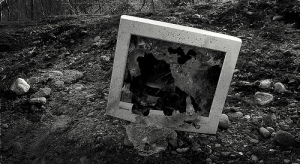Social media has been causing the football association a mild but steady headache for a while now but last week the FA finally released its ‘Social networking clarification’ document.
Read the FA’s official statement here
The footballer most infamous as a misuser of social media is perhaps Ryan Babel, the ex-Liverpool player. After one of his final games for the club, an FA cup tie between Liverpool and Manchester United, he edited a picture of referee Howard Webb wearing a Manchester Utd shirt which he tweeted as a sign of disatisfaction with a penalty decision early in the match. The image was accompanied by a caption which read “And they call him one of the best referees. That’s a joke.” Following the outburst he was fined £10,000 and charged with improper conduct.
More recently, England and Arsenal golden boy Jack Wilshere also came under fire for criticising a referee but received no such punishment.
Jack Wilshere escapes punishment for Twitter jibe
There are discrepancies – Babel made a direct reference to the referee yet was somewhat humorous with its edited photograph while Wilshere merely referred to ‘inconsistency’ but arguably came across as more scathing. However, the sentiment behind these posts is similar enough that to punish one player and not the other seems unfair – both undermined football officials.
The FA classification has been issued to set a standard and to eradicate all social media complaints from players. This precaution taken by the FA is no different to any other business or organisation. For all its revolutionary qualities social media still requires a considered and guided approach in some cases, particularly when being used by someone considered a representative of a larger group – e.g. a football team. In the cases of business, social media guidelines exist primarily to ensure that the company’s reputation is not damaged by anything an employee (e.g. a representative) says on social media. However, a football team’s reputation is hardly going to be affected by a tweet or two. The reputations of entire teams are made on the pitch. The reputation being protected here is that of the game itself.
How does social media relate to the reputation of football? Well, the reason for the FA issuing the clarification is so that the players respect for the football hierarchy and officials remains intact. Players are disciplined during matches if they show disrespect towards an official so the same should occur off the pitch. The damage that can be done towards an official by a widely publicised off-pitch comment is well illustrated by the recent Andy Gray/Richard Keys/Sian Massey situation. While the culprits have been punished, Massey is now on the receiving end of increased jibes due to the actions of the former Sky pundits. What if such a situation was to recur following comments made on Twitter? The FA would only have themselves to blame.
The guidelines are a necessity for the modern game. They simply remind players that their social media posts are public domain and that they should treat social media statements as they would an interview. It may seem a little extreme but as players are representatives of the game, it is a necessary step.
image by Mandyxclear on flickr.com


